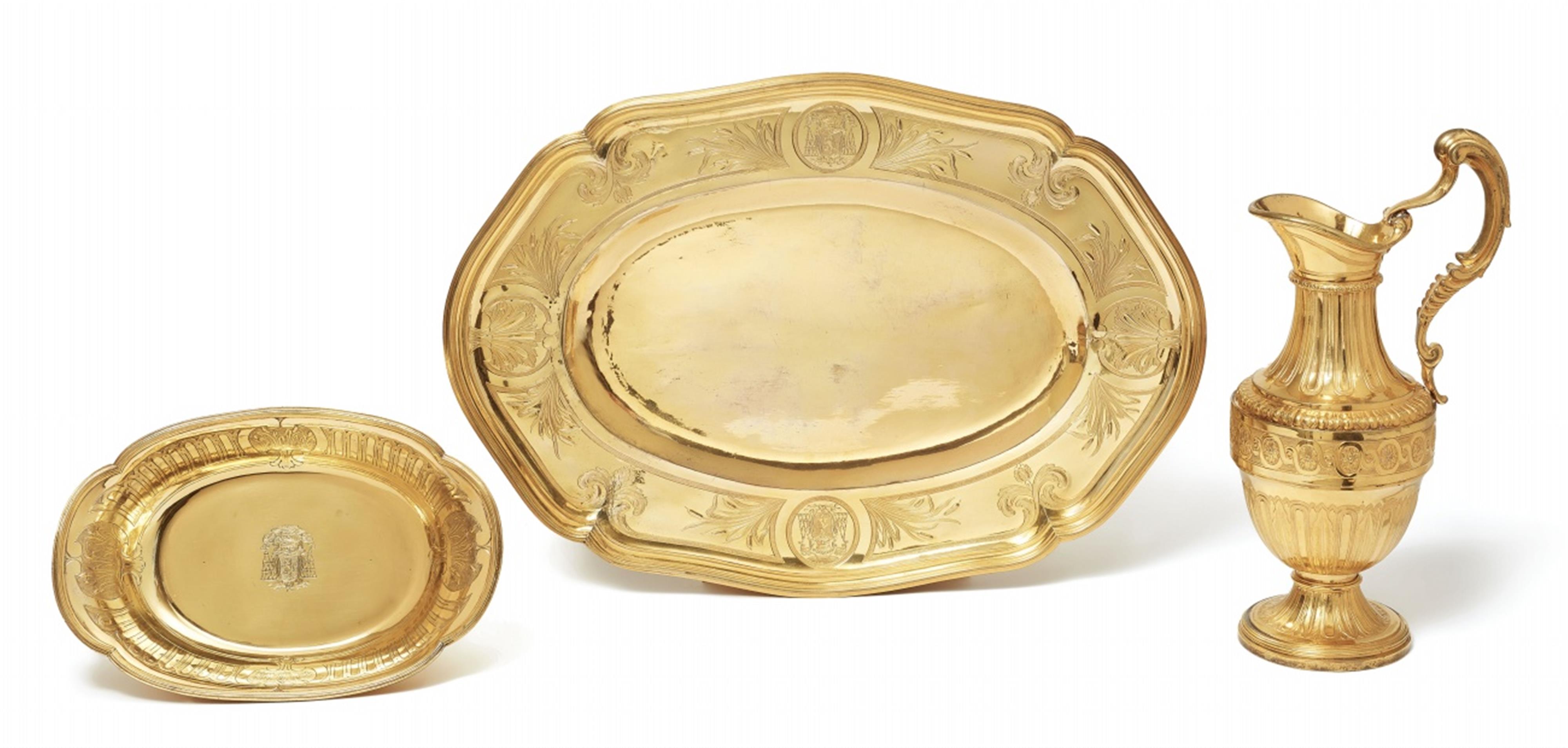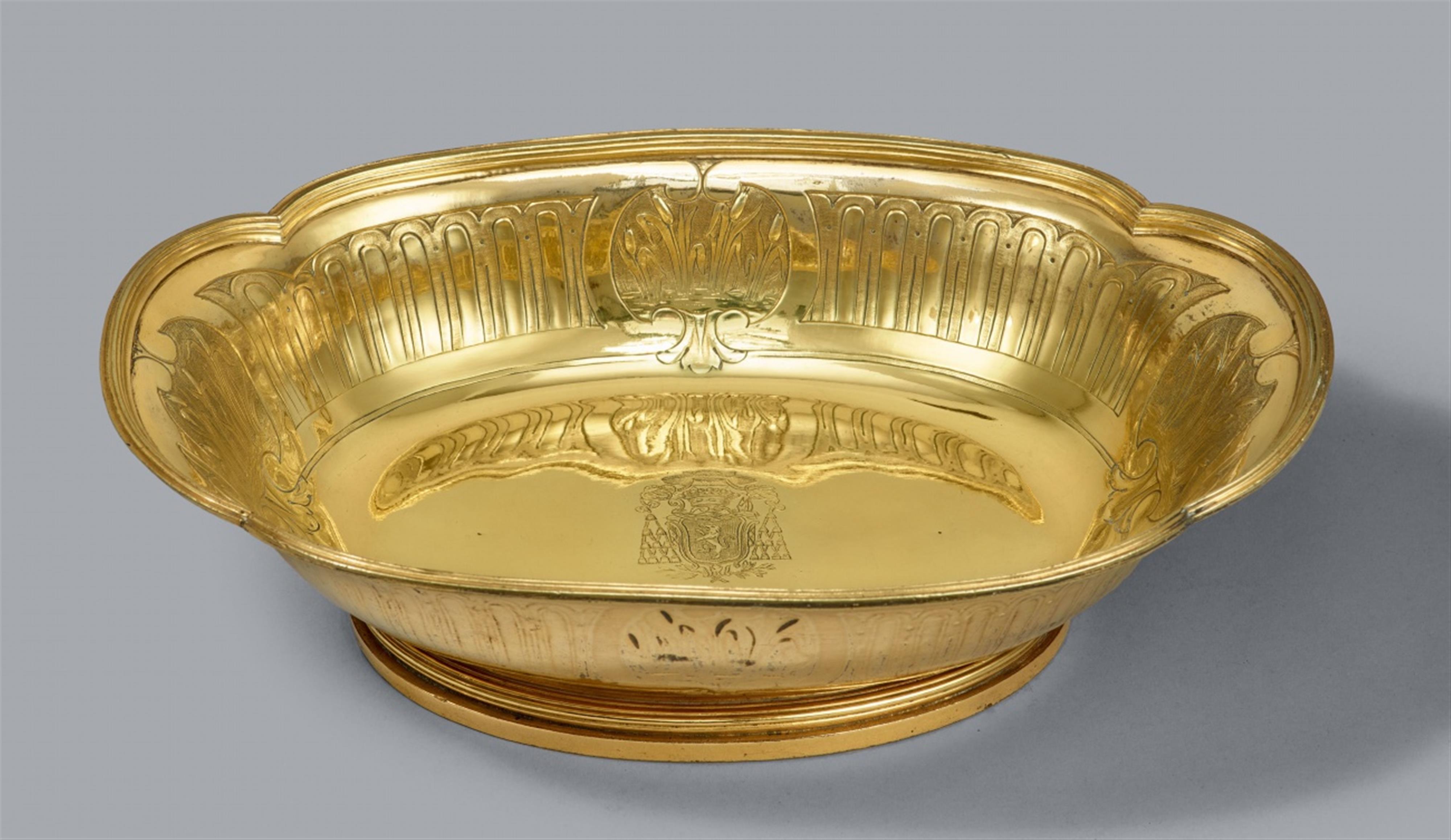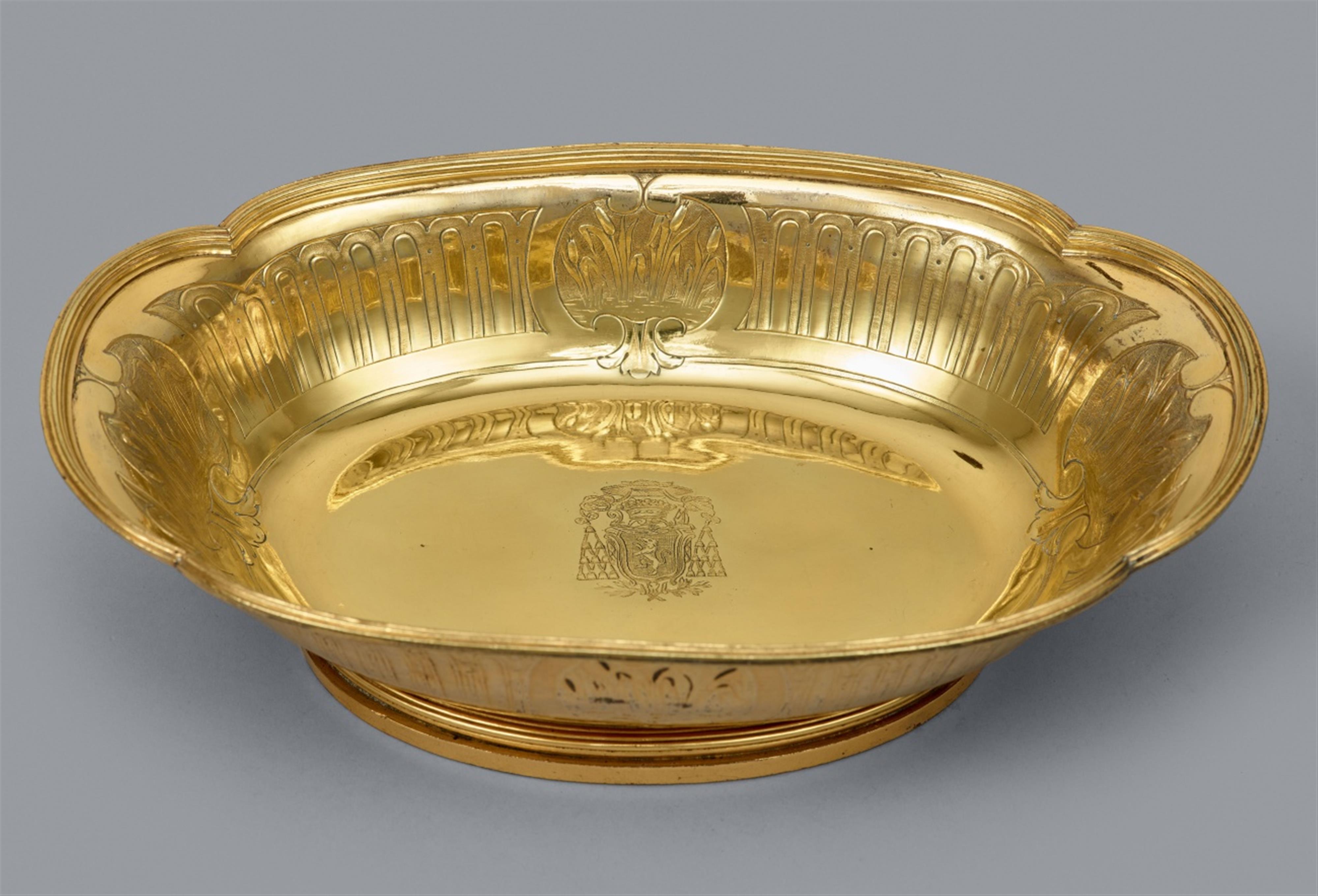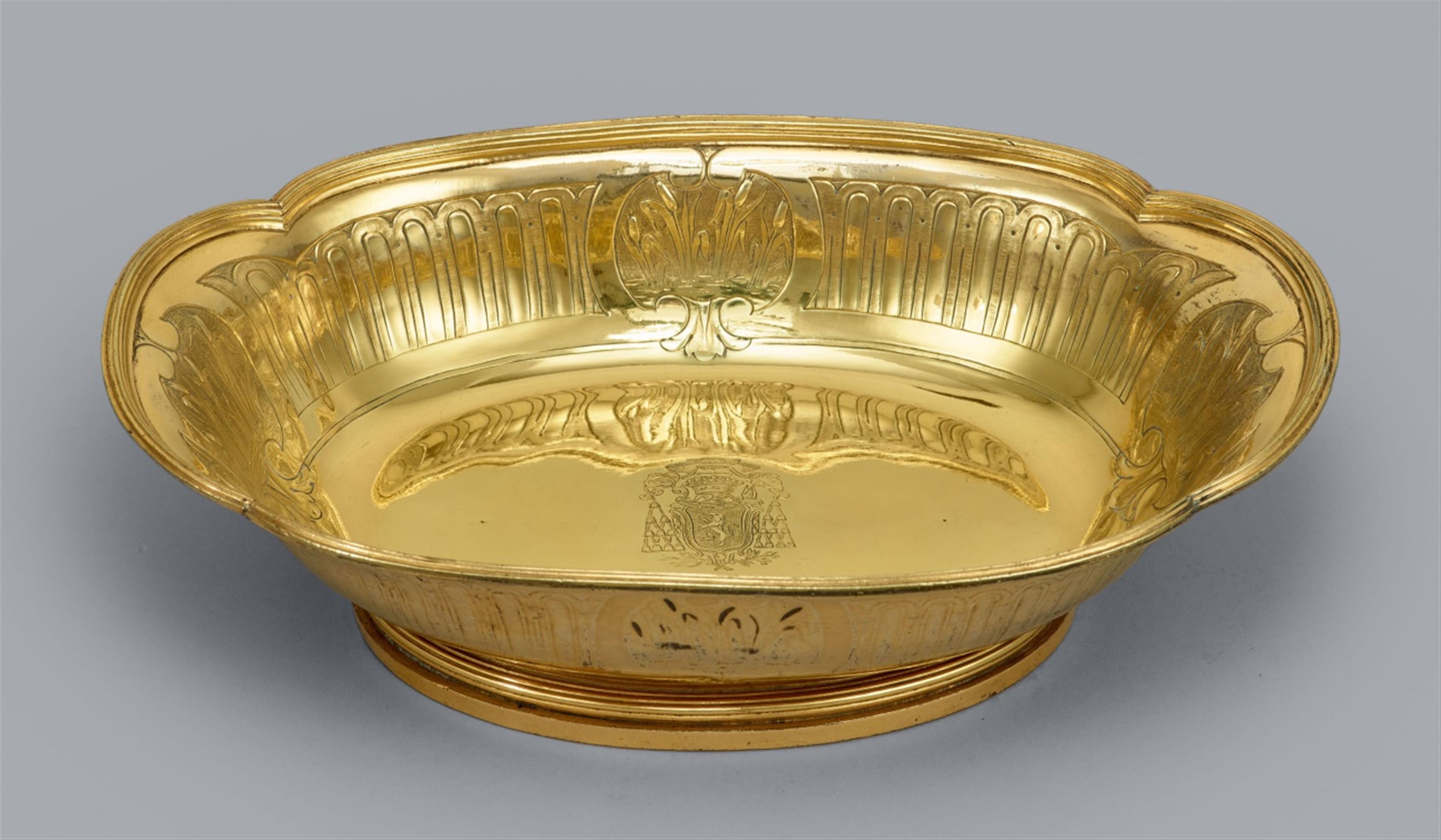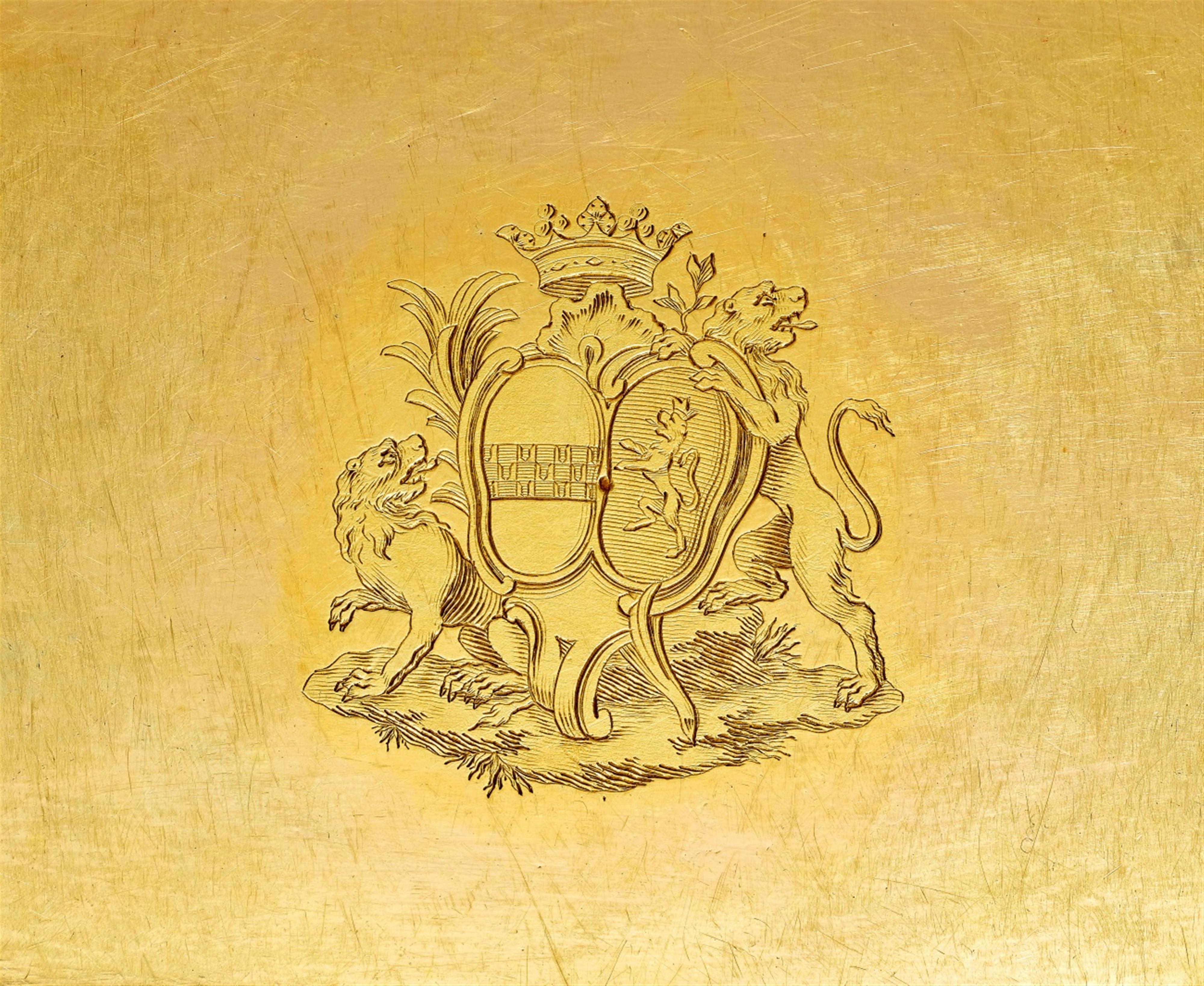Three pieces from a toilet service for Jean-Marie-Anne-Hippolyte Haÿ de Bonteville
A so-called “pomponne”, made from gold and copper alloy with chased, engraved and polished décor. Godroned jug with accentuated centre and raised rocaille handle. Small oval lavabo basin, inside engraved cymation and four reserves with reeds in the water. Shallow, fitting oval bowl with multiple profiled rim and engraved reed motifs. On all parts the engraved coat-of-arms. H 7.8, W 27.5 cm, weight 735 g.
Paris, circa 1785.
In 1785, craftsmen working at the Hotel de Pomponne in Paris (Hotel de L'Hospital) were granted a royal privilege that allowed them to produce small items in a material that imitated gold. The material in question was a copper based alloy which, when polished, took on a bright yellow colour, sometimes with copper or pink undertones. The alloy usually contained a small amount of gold. However, in contrast to true gold, it develops traces of oxidation and gives only the illusion of being perfectly polished.
Jean-Marie-Anne-Hippolyte Haÿ de Bonteville (1741 - 1788) was doctor of theology at the Paris faculty, provisional abbot of the abbey of Celles in 1771, vicar general to the archbishop of Aix-en-Provence, and representative of the ecclesiastical province at the Assembly of the Clergy in 1775. He appears to have enjoyed the protection of the court and was appointed bishop of Saint-Flour in 1776 at the age of 35.
He had a reputation for being a libertine and frequently complained about his diocese in Auvergne. In 1779 he finally obtained his transfer to Grenoble. However, once he became bishop of Grenoble, Haÿ de Bonteville spent almost all of his time in Paris or at his country home in Fougères, and was later asked by the Parliament of the Dauphiné to return to his diocese. On 6 October 1788, he committed suicide at his chateau of Herbeys, near Grenoble, after playing an inglorious role in pre-revolutionary events.

